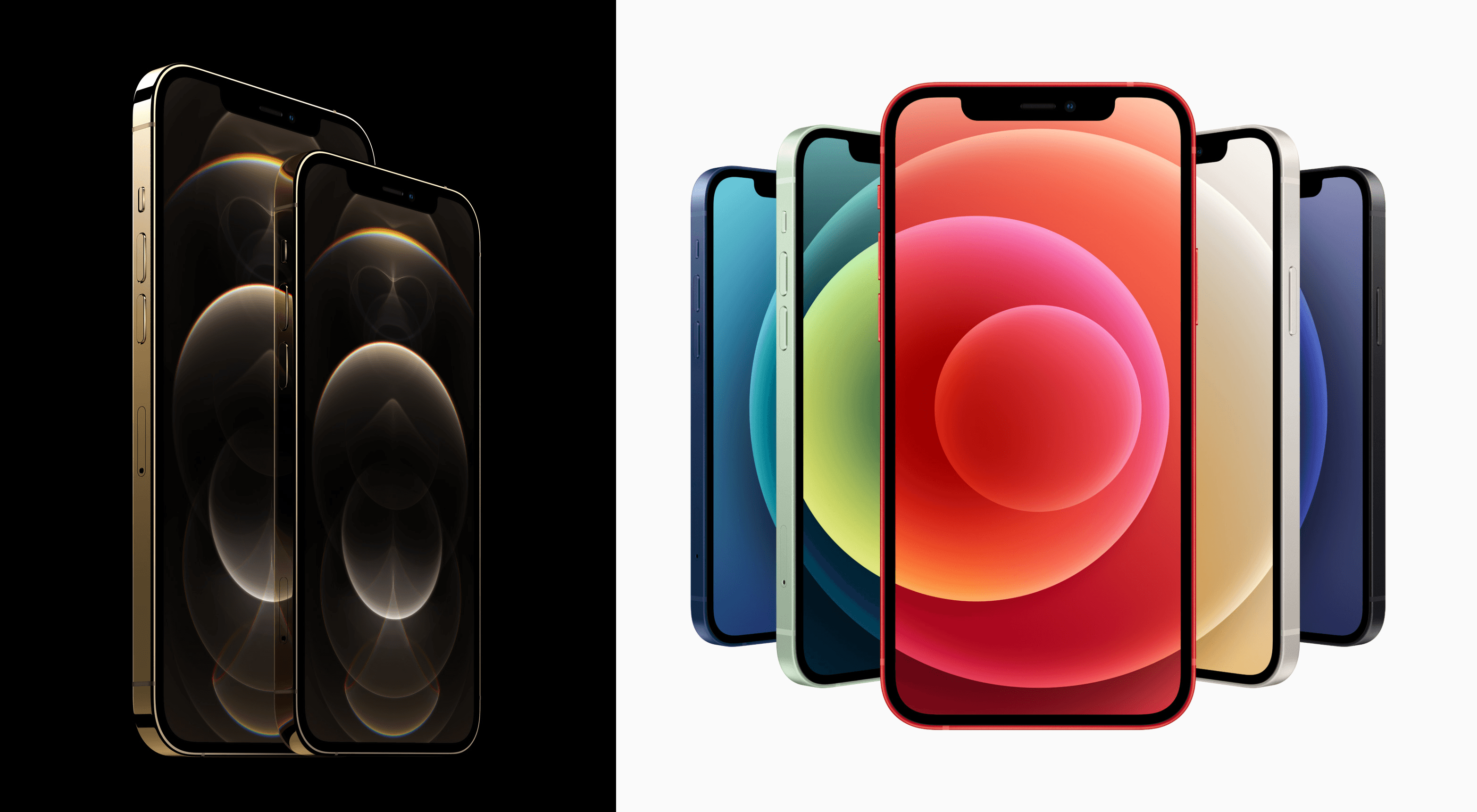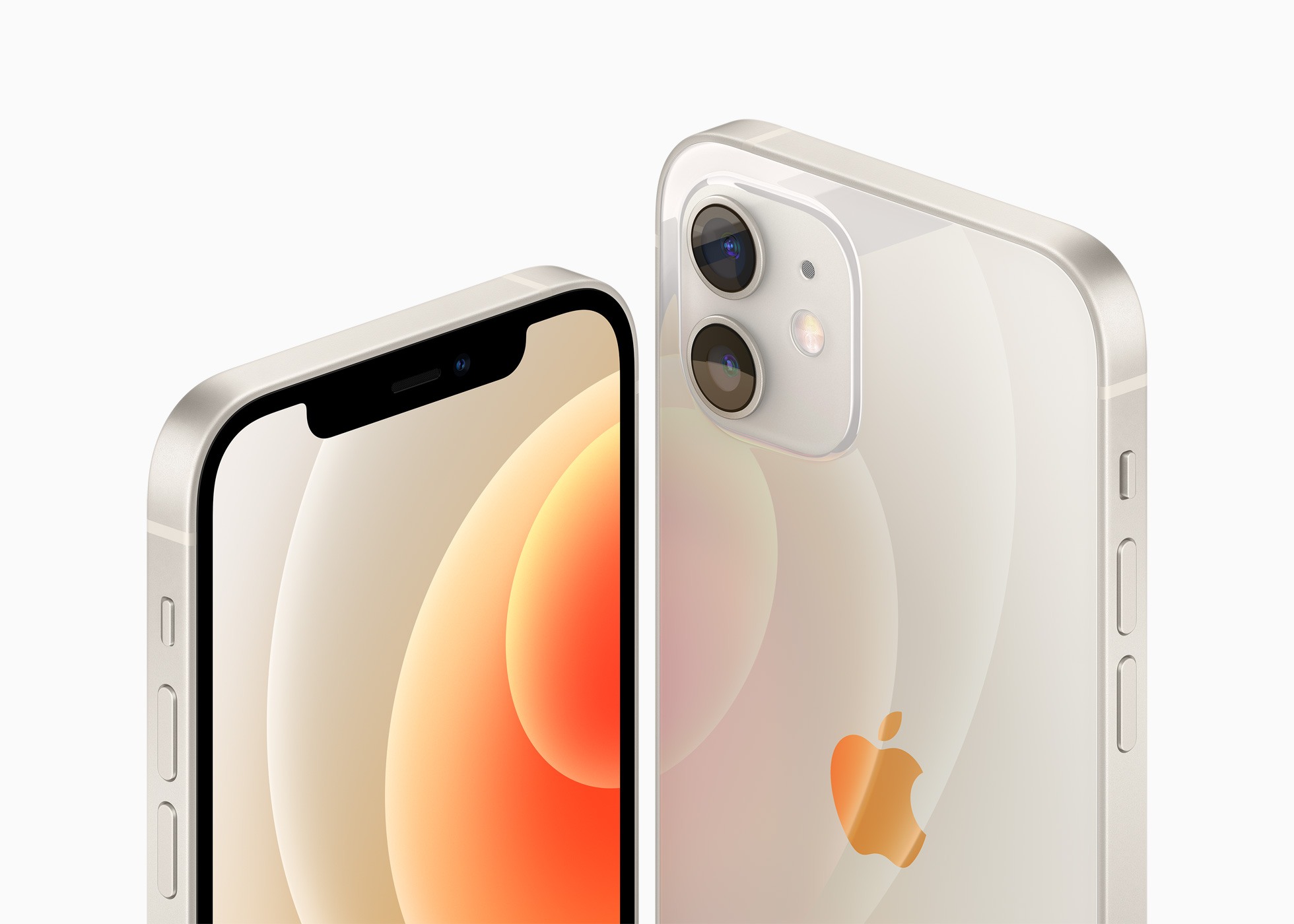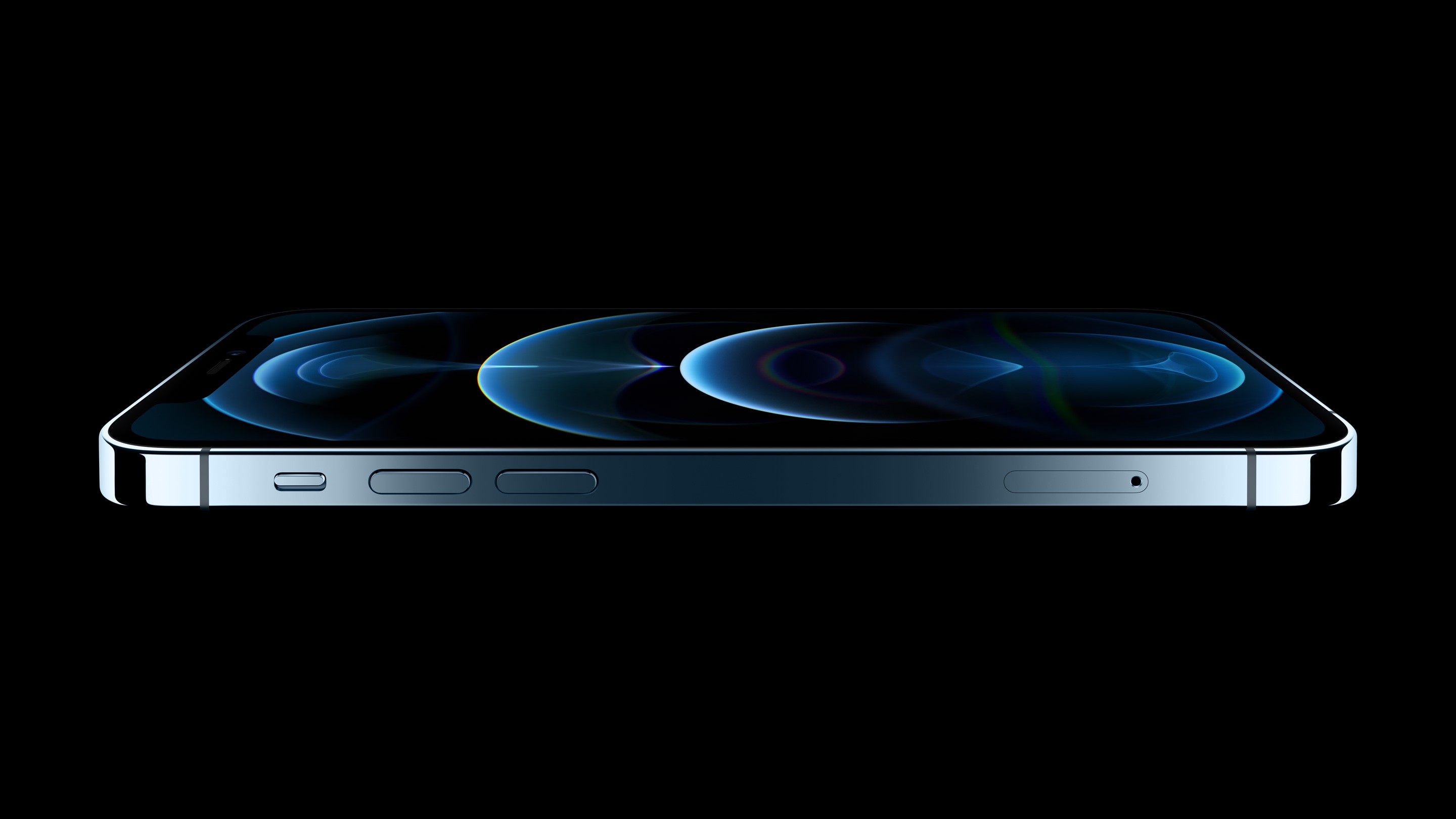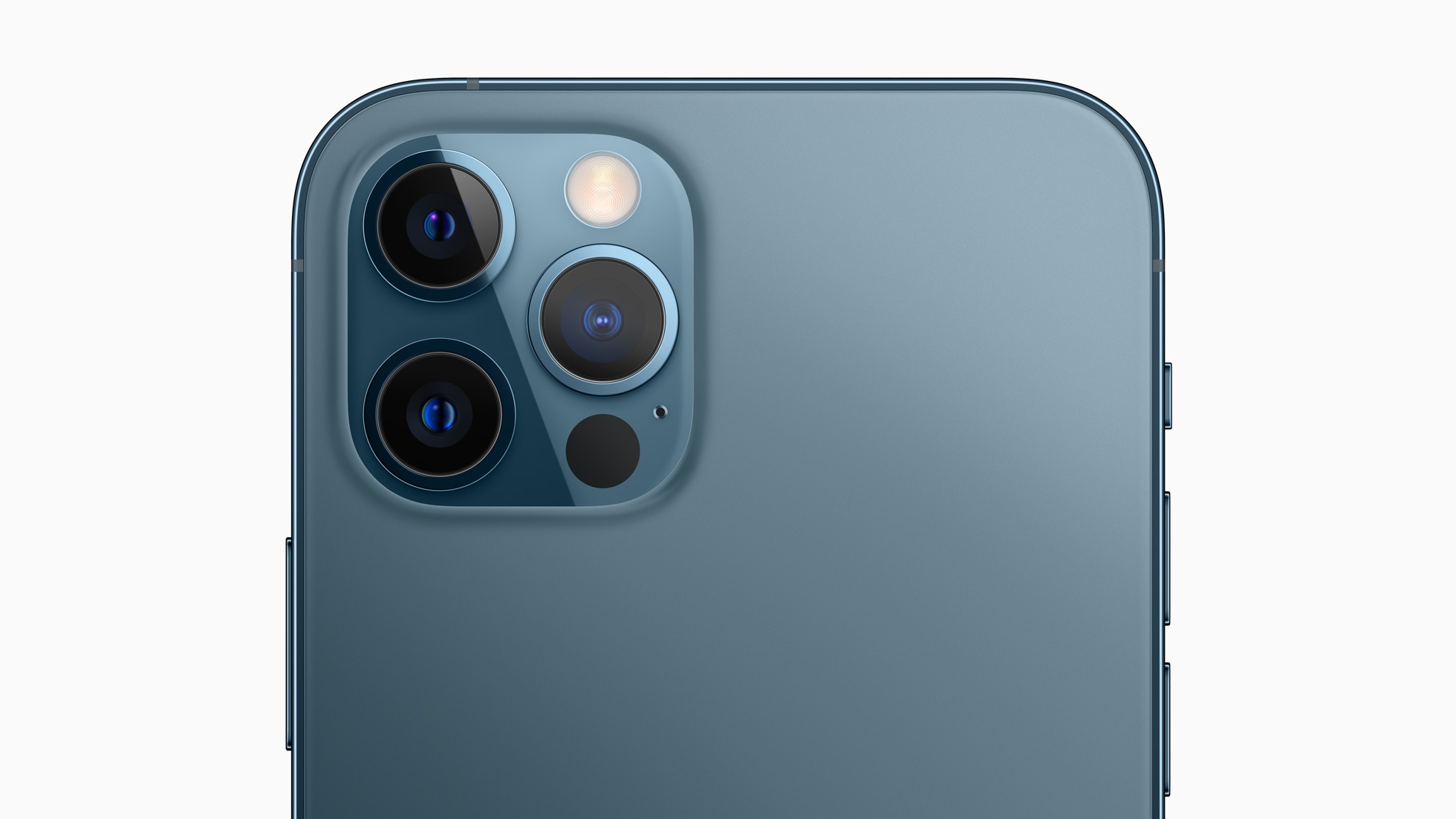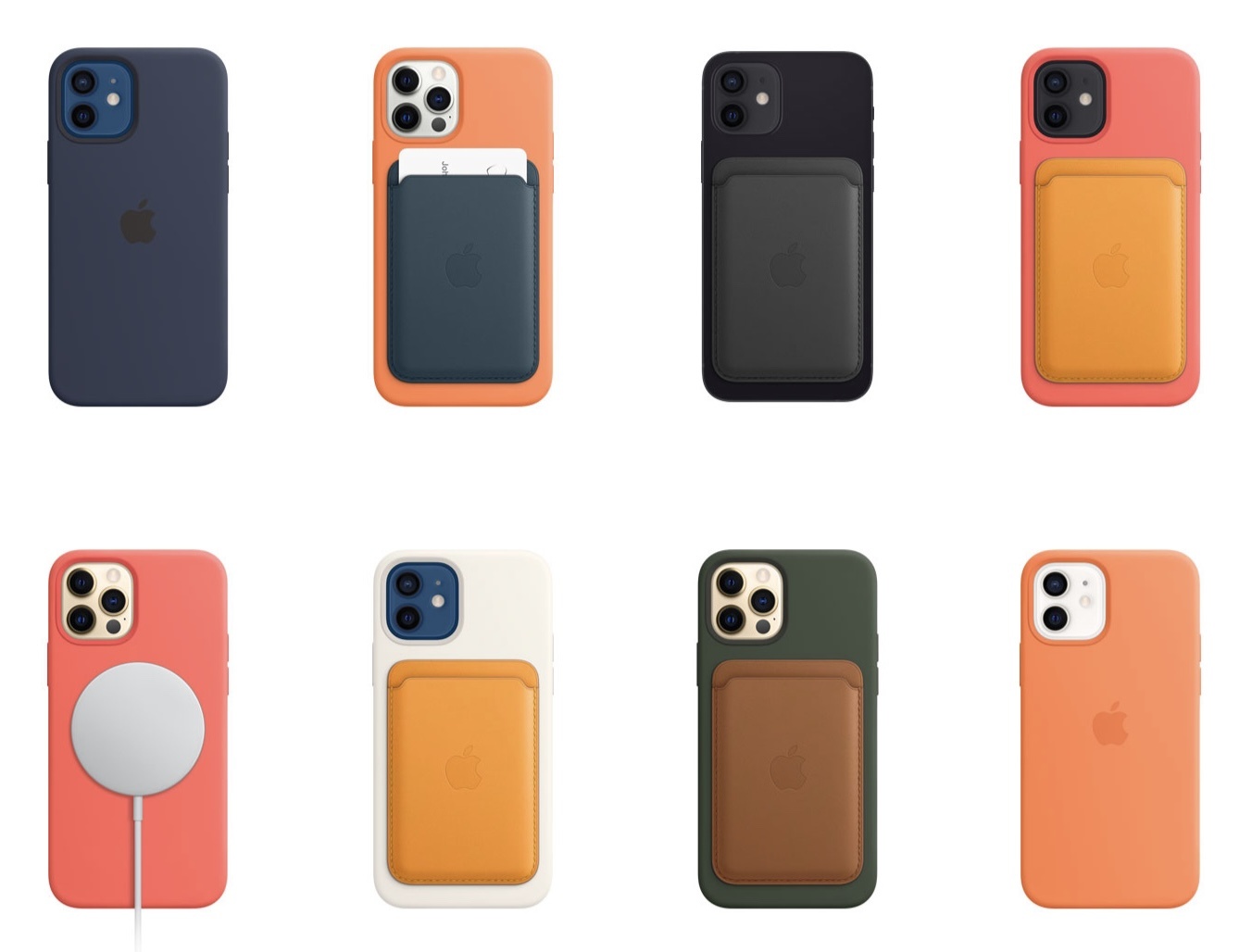Today during its streamed event from Apple Park, Apple debuted its flagship iPhone 12 lineup consisting of four separate devices, the largest number of new models ever debuted at once:
- iPhone 12 mini
- iPhone 12
- iPhone 12 Pro
- iPhone 12 Pro Max
The iPhone 12 and 12 mini are the more affordable options, while the two Pro models add premium features, most notably better camera systems, at an additional cost. All four devices share a lot in common, however, such as the new A14 processor, support for 5G networking, a fresh physical design inspired by the iPad Pro, camera upgrades, support for new magnetic accessories, and more.
The iPhone 12 and 12 Pro will be available for pre-order this Friday, October 16 starting at $799 and $999, respectively, and ship on October 23. The iPhone 12 mini ($699) and 12 Pro Max ($1,099) won’t arrive until a few weeks later: their pre-orders open November 6 and they’ll arrive in customers’ hands on November 13.
Which model is right for you? Here’s a full overview of everything new for each device.
Design and Display
All iPhone 12 models still retain the notch that was first introduced on the iPhone X, but they come with notable changes in design and display size.
Dating all the way back to the iPhone 6’s launch in 2014, the iPhone has had rounded sides, replacing the flat-edged design of the iPhone 4 and 5 models. In 2018, however, a different Apple device hinted that a change might be coming for the iPhone. The 2018 iPad Pro redesign brought iPhone 4-like flat sides which paired beautifully with its thin-bezel design, and many hoped that design would find its way back to the iPhone. Now with the iPhone 12 lineup, Apple has done just that.
Like the iPhone 4, 5, and iPad Pro before it, all iPhone 12 models include flat sides rather than rounded ones, which might make the devices easier to keep a grip on. Different materials are used for the different models’ side edges, with the iPhone 12 and 12 mini using an aluminum finish while the Pro models employ a more premium stainless steel.
There are also brand new color options to complement this year’s new design. The iPhone 12 and 12 mini are available in Black, White, Green, Blue, and (PRODUCT)RED, while the iPhone 12 Pro and Pro Max offer four shades of their own: Graphite, Silver, and Gold, along with a new Pacific Blue that replaces last year’s Midnight Green.
Beyond these design changes, the iPhone 12 line also brings new screen sizes that have never been offered with iPhone before.
- The only model that hasn’t changed screen size at all compared to its 2019 predecessor is the standard iPhone 12, which features a 6.1-inch display like last year’s iPhone 11. Apple does note, though, that despite having the same size display, the iPhone 12 is both thinner and lighter than its predecessor.
- The 12 Pro has gotten a little larger than the 11 Pro it replaces, with a 6.1-inch display that matches the size of the standard 12. The 11 Pro, by contrast, had a 5.8-inch display.
- The 12 Pro Max has similarly grown even larger than previous Max models, with a huge 6.7-inch display, up from last year’s 6.5-inch.
- Finally, the small iPhone 12 mini features a 5.4-inch display in a very compact form factor that’s smaller and lighter than the iPhone SE despite its larger screen.
Size isn’t the only noteworthy change with this year’s iPhone displays. For the first time, all of Apple’s flagship iPhones now feature OLED displays; in previous years the higher-cost models featured OLED while the more affordable models used LCD. This year all iPhone 12 models include what Apple calls its Super Retina XDR Display, which features 2 million-to-1 contrast ratio that enables true blacks, as well as rich color, and more. While the iPhone 11 Pro already included this display technology, it’s great to see it expand to the lower-cost iPhones this year.
5G Networking
When 4G LTE service started becoming more widespread in the world, the iPhone was notably behind competing Android phones in supporting it. With 5G, Apple isn’t making the same mistake twice. While plenty of Android flagships have offered 5G support over the last year, cell carriers have only recently started to accelerate the number of areas where 5G connectivity is available. It feels like the next year will be a big one for 5G proliferation in the world, and Apple is ready.
All iPhone 12 models support 5G networking for faster cellular speeds. This isn’t a premium feature limited only to the Pro devices, but rather the whole lineup benefits from 5G.
5G is still in the early stages of its lifespan, so it may bring with it some growing pains like increased battery drain. Apple has sought to mitigate those challenges with what it calls Smart Data mode. Rather than keeping the iPhone’s 5G antenna constantly activated, and suffering a battery hit as a result, iOS will intelligently switch your iPhone 12 between 5G and LTE depending on the coverage in your area, so you always get the best connection possible without a negative effect on battery.
In the US, the iPhone 12 lineup will feature even better support for 5G thanks to its mmWave technology, which Apple has tested as supporting download speeds of up to 4.0 gbps in ideal conditions, and 1.0 gbps in typical conditions.
Cameras
The camera has long been one of the most important features of the iPhone, and that has become even more true than ever in recent years, as Apple has doubled down on shipping what it believes is the best smartphone camera system in the world. Last year with the iPhone 11 line that meant adding an Ultra Wide camera, Night mode, and the machine learning-powered Deep Fusion technology. The iPhone 12 follows that strong showing not by offering a revamp of the camera system, but rather by taking the existing setup of lenses and machine learning features and making them better than ever before.
Let’s start with the hardware itself. The default Wide angle lens across all iPhone 12 models features a new ƒ/1.6 aperture, an improvement over last year’s ƒ/1.8; there’s also a new 7-element lens being used which should provide up to 27% improvement in low-light conditions, and the Max model gets a larger sensor too. The Ultra Wide lens on all iPhone 12 models features the same ƒ/2.4 aperture as we saw last year.
The Telephoto lens is also getting some love this year, though it’s still exclusive to the Pro and Pro Max models. The new Telephoto lens features an improved focal length that enables a greater range of optical zoom than ever before. The 12 Pro has a 2x optical zoom in and 2x optical zoom out for a total of 4x optical zoom range, while the Pro Max has 2.5x optical zoom in, and 2x optical zoom out, with a total optical zoom range of 5x. That’s right, unlike last year’s Pro iPhones which featured identical camera systems, this year the Pro Max model has an advantage over its sibling phone. Not only is there greater zoom with the Pro Max, but it also features a new sensor-shift optical image stabilization system that enables stabilized exposure times of up to 2 seconds, and the larger sensor already mentioned.
The one area where the iPhone 12’s hardware offers something that’s not just an improvement, but rather is new altogether, is the LiDAR scanner that’s exclusive to the Pro models. First seen on the 2020 iPad Pro, the LiDAR scanner offers big improvements to AR, most notably removing the need for that annoying step of waving your iPhone around a room so the device can learn the environment. With the LiDAR scanner, AR can happen instantly, since with tremendous speed and precision the iPhone 12 Pro can measure the distance between itself and surrounding objects, gaining a spatial awareness not possible before.
LiDAR isn’t just for AR though, and in fact Apple was surprisingly restrained in its discussion of the scanner’s AR capabilities. Rather than simply promoting AR, the company also touted some of the benefits of LiDAR for photography, which include faster autofocus, especially in low light situations, and improved depth when using Night mode.
As great as all these hardware upgrades are, the pairing of hardware with software is where the iPhone’s camera system has long sought to differentiate itself, and that’s no different this year.
The standout feature made possible by all these camera improvements, as well as the power of the A14 Bionic, involves video. All iPhone 12 models offer HDR video recording. This 10-bit HDR recording capability captures up to 700 million colors, which is 60x more than before. You can even shoot Dolby Vision HDR with not only the Pro models, but the base iPhone 12 and 12 mini as well. The one drawback on these more affordable models is that only the Pro iPhones can shoot Dolby Vision at 4K 60 fps; non-Pro models max out at 30 fps. Apple highlighted that the iPhone 12 is the first and only smartphone to not only shoot, but also edit Dolby Vision video right on-device.
Other software improvements include upgrades to Night mode, which now works on all of the iPhone 12’s cameras rather than being limited to the Wide lens. You can take Ultra Wide, Telephoto, or even selfie shots with Night mode, and Night mode Time-lapses are now an option too. Similarly, Deep Fusion will work across all of the new iPhones’ cameras. Apple also touted the latest version of its Smart HDR system, now dubbed Smart HDR 3, which provides greater detailed images than before.
One last piece of big software news is the introduction of Apple ProRAW. Available in the Camera app on iPhone 12 Pro and Pro Max later this year, Apple ProRAW will combine the benefits of ML features like Deep Fusion with the flexibility of RAW. Users who prefer capturing their images in RAW will no longer have to sacrifice the computational photography benefits that Apple’s stock Camera app provides. Not only that, but Apple will grant third-party apps the ability to both capture and edit ProRAW images, so you won’t be limited to using Apple’s own apps.
A14 Bionic Processor
No matter which iPhone 12 model you choose, you’ll get the same powerful A14 Bionic processor. This chip was first announced last month due to its inclusion in the latest iPad Air, and unsurprisingly the same chip powers this year’s iPhone line.
The A14 Bionic is the first smartphone chip built on a 5-nanometer process, enabling greater power than ever before. Apple’s A13 was already an extraordinarily powerful chip, so this year many of the comparisons Apple has made stack the A14 against other smartphone chips rather than against the A13, since such comparisons show greater grains. For example, Apple says the A14’s 6-core CPU and 4-core GPU are both up to 50% faster than what’s available in other smartphone chips.
The A14’s Neural Engine now features 16 cores, up from 8 in the previous generation, enabling it to perform over 11 trillion operations per second and offer 70% faster ML performance.
Apple’s chip team never fails to impress, and I can’t wait to see what the company has in store for its first Apple Silicon Macs later this year.
Magnetized Wireless Charging and Accessories
Apple has never released a first-party charging mat before now, as the one it initially announced in 2017, the infamous AirPower, was eventually cancelled after several delays. Three years later, the company finally has some news on the wireless charging front.
Apple’s new MagSafe accessories take advantage of the iPhone 12 line’s support for magnetic attachments. The standard MagSafe charger looks like a larger version of the Apple Watch’s inductive charging puck, snapping to the back of your iPhone to charge it. Apple also announced a MagSafe Duo charger, shipping at a later date, that enables charging both your iPhone and Apple Watch at the same time. These chargers will work through compatible cases from Apple, like its standard silicone, leather, and clear cases. They’ll also feature 15w charging, which is faster than the standard spec supported by previous Qi chargers.
The magnetic backs of the iPhone 12 lineup aren’t just good for chargers though: Apple has announced a leather wallet accessory that can be magnetically attached too. It will be interesting to see what other accessory ideas third parties come up with.
All the Rest
Ceramic Shield. In special partnership with its glass supplier, Corning, Apple has developed a tougher glass for the iPhone 12’s display that it calls the Ceramic Shield. This provides up to 4x better drop performance than previous iPhones, which is the greatest year-over-year endurance gain the iPhone has ever had.
Battery life. Apple didn’t share any details during the event about the battery life of its new devices, but according to its website, it seems that battery life will be roughly the same as last year. The iPhone 12 claims an extra hour of streamed video playback over the iPhone 11, but in all other metrics it’s identical; conversely, the 12 Pro claims one less hour of video playback time than the 11 Pro, but in all other metrics it’s identical.
Storage. The iPhone 12 and 12 mini offer the same storage options as last year’s iPhone 11: 64GB, 128GB, and 256GB. The 12 Pro and Pro Max, however, start at 128GB for their base option, with 256GB and 512GB models at higher price points.
No charging brick or EarPods. Following its similar move with the new Apple Watch models, Apple will no longer be including a charging brick in the box with new iPhones. Additionally, wired EarPods will no longer be bundled in the box either. All you’ll get is the device itself plus a USB-C to Lightning cable to use with your existing charging brick (assuming it has a USB-C port, which it may not).
Improved water resistance. The iPhone 12 lineup is rated IP68 for water resistance, which technically is the same rating as last year’s iPhone 11, but where it differs is that all new models are IP68 for a maximum depth of 6 meters, an improvement from the previous max of 4 meters for the iPhone 11 Pro and just 2 for the iPhone 11.
Pricing and Availability
Here’s the full range of prices for the iPhone 12 lineup:
- iPhone 12 mini: $699 (64 GB), $749 (128GB), $849 (256GB)
- iPhone 12: $799 (64 GB), $849 (128GB), $949 (256GB)
- iPhone 12 Pro: $999 (128 GB), $1,099 (256GB), $1,299 (512GB)
- iPhone 12 Pro Max: $1,099 (128 GB), $1,199 (256GB), $1,399 (512GB)
The iPhone 11 and XR are also sticking around at $599 and $499 respectively, along with the iPhone SE at $399.
iPhone 12 and 12 Pro pre-orders open this Friday, October 16, and will be available a week later on October 23. Those in the market for an iPhone 12 mini or 12 Pro Max will have to wait a little longer, with pre-orders opening November 6 and availability on November 13.
Apple has never launched so many new iPhones at once, but its iPhone 12 lineup is impressive. Last year’s iPhone 11 launch focused on fewer, but more important areas of advancement, such as cameras and battery life. This year there may not be any single feature quite as transformative, but the full slate of improvements is quite diverse. With its design, 5G, camera upgrades, magnetic accessories, the A14 Bionic, Ceramic Shield, and more, the iPhone 12 makes for a better overall product in a variety of ways.
2020 has caused many of us to stay home more than ever before, giving the iPhone perhaps a less important role in our computing lives than devices like the Mac and iPad. Whether that’s true for you or not, there’s no doubt that Apple hasn’t let up on its relentless iteration of its most popular product.
The iPhone 12, 12 mini, 12 Pro, and 12 Pro Max are as strong an iPhone lineup as I can remember. I may not be using my iPhone quite as much as I did when I was on the go more regularly, but these new models make me long for the day when I’ll get to take my new iPhone out into the world more often, using it in all the ways and all the places of precious days gone by.
You can follow all of our October event coverage through our October 2020 event hub, or subscribe to the dedicated RSS feed.


